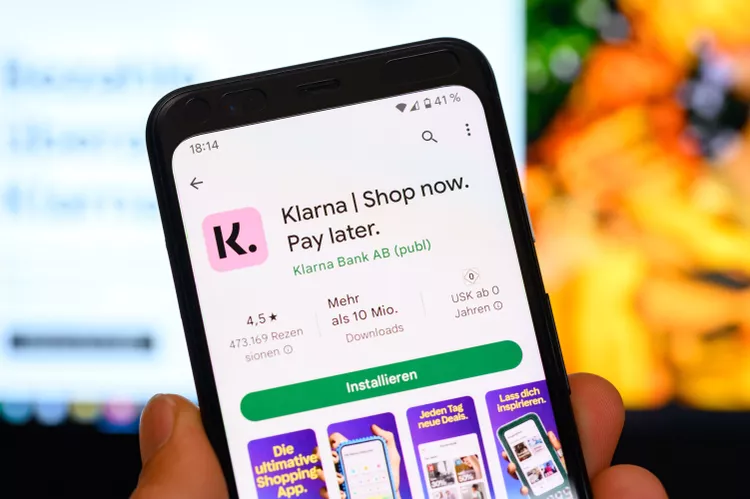If you’re among the roughly 360 million people worldwide who have used buy now, pay later (BNPL) services on popular apps like Afterpay, Klarna, and Sezzle, you could be asking yourself how rising interest rates could affect your payments.
Most BNPL payment options, including the standard “pay in four” option—where a customer puts a small down payment and pays off the remaining balance in four installments—typically don’t charge interest, meaning shoppers who take on these loans should be unaffected.
However, BNPL companies have expanded their offerings, and some now offer longer-term loans that charge interest. The interest rates on these loans can exceed those on credit cards and could be adjusted higher as rates continue to rise. For example, Block Inc.’s (SQ) Afterpay, one of the biggest BNPL providers, offers long-term loans of up to $25,000 that charge interest rates as high as 36%, according to Consumer Reports. Borrowers who fail to pay on time can also be charged high late fees, typically $30 or more.
Rising interest rates on these loans could present a litmus test for BNPL providers, as higher borrowing costs could increase delinquencies and cause financially strapped customers to default on their payments. According to a Fitch Ratings report, higher rates could also make it more expensive for BNPL companies to finance their loans.
How the Biggest BNPL Providers Have Fared So Far
Contrary to expectations, some of the biggest BNPL providers have been resilient in the face of rising interest rates, and have not seen a spike in defaults. Loss rates at Afterpay and Klarna—two of the biggest BNPL providers—have held steady at 1% or less, consistent with their long-run averages.
Delinquency rates at Klarna have fallen this year, which representative Addie Colton said was a testament to the company’s “robust underwriting and the responsible way consumers use our [Klarna’s] credit products.”
The company has robust protections to prevent customers from getting into debt, including clear and transparent repayment plans, strict eligibility checks to determine borrowers’ creditworthiness and limits on spending. Customers who routinely miss payments can also have their services restricted.
Colton is optimistic about the industry’s prospects. “In these times, with banks charging record-high interest rates and credit card interest rates reaching a staggering 36%, we think consumers need a fairer, healthier alternative to high-cost credit cards,” she said. Colton believes BNPL can fill that void by saving people time and money.
Afterpay, another major provider of BNPL services, said in an email that 98% of payments received in the first quarter did not incur late fees, while losses on consumer receivables were below 1%.
Competition and Regulatory Challenges
Other headwinds remain, however. BNPL providers could see increased competition from more established firms like Apple (AAPL) and American Express (AXP) that have launched their own BNPL offerings in recent years. In March, Apple introduced “Apple Pay Later,” a service that allows customers to buy products through four interest-free payments spread out over six weeks, with no fees involved. American Express launched “Plan It” in 2021, which allows cardholders to pay off purchases of $100 or more through monthly installments.
As with any nascent industry, BNPL could also be subject to increased scrutiny from regulators. The Federal Trade Commission (FTC) issued a statement last year instructing BNPL providers to comply with the broader FTC Act, while consumer watchdogs like the Consumer Financial Protection Bureau (CFPB) have outlined a set of potential risks to consumers, including a lack of disclosures and data harvesting, and have lobbied regulators on the matter.
What is BNPL and How Does It Work?
Buy now, pay later (BNPL) is a payment method that allows consumers to pay for goods and services through installments, often with little or no interest, rather than a lump sum. For example, a shopper can make a down payment of 25% and pay off the rest of the balance over the next six to eight weeks, typically over four interest-free installments. For this reason, BNPL is often viewed as a less expensive alternative to credit cards and traditional banking services.
While BNPL services accept purchases of any cost, those ranging from $101 to $250 seem to be among the most prevalent. These account for a plurality of Gen Z (27%) and Millennial (22%) buyers’ BNPL purchases, according to a Credit Karma survey. Furniture, electronics, and apparel were among the most frequently purchased categories of products.
Who Uses BNPL?
While individuals of all ages and backgrounds have used BNPL, the average user tends to be younger and more financially vulnerable. They are also more likely than non-users to have a bank account or other financial account, contrary to perceptions that BNPL caters mostly to the underbanked.
A CFPB survey from March found 95% of BNPL borrowers had at least one credit record in another financial account, compared with 86% of non-borrowers. Women and minorities, and consumers with annual incomes below $50,000, were also more likely to use BNPL.
How Big is the BNPL Market?
The market for BNPL exploded during the pandemic, when store closures fueled a surge in online shopping, while digitization and financial uncertainty gave rise to alternative payment methods. The BNPL market grew tenfold between 2019 and 2021, to $24.2 billion from just $2 billion before the pandemic, a stunning increase of over 1,000%.
Growth isn’t projected to let up. Juniper Research, a U.K.-based market researcher, projects worldwide usage of BNPL services could swell to 900 million people by 2027, up from 360 million last year, as rising interest rates and economic uncertainty increase the demand for low-cost payment options.

